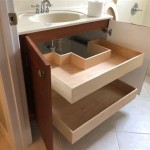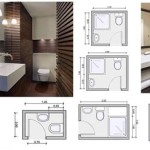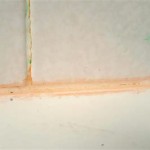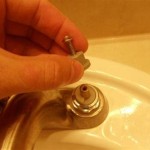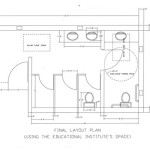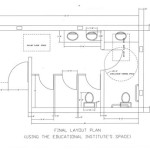How to Repair Old Bathroom Tiles
Old bathroom tiles can become damaged over time, resulting in cracks, chips, and grout lines that have seen better days. This can detract from the overall aesthetic appeal of your bathroom and even pose safety concerns. Fortunately, repairing old bathroom tiles is a manageable task that can breathe new life into your space. This article will guide you through the process of repairing old bathroom tiles, covering essential techniques for addressing common issues.
Repairing Cracked or Chipped Tiles
Cracked or chipped tiles are a common problem in older bathrooms. While minor cracks may not require immediate attention, larger cracks or chips can pose a safety hazard and should be repaired promptly. The following steps outline a practical approach to repairing cracked or chipped tiles:
1.
Clean the Damaged Area:
Begin by thoroughly cleaning the cracked or chipped tile using a mild detergent and a damp cloth. This will remove any dirt, debris, or existing sealant that could interfere with the repair process. Allow the tile to dry completely before proceeding.2.
Prepare the Repair Material:
Depending on the severity of the damage, you can choose from various repair materials. For minor cracks or chips, epoxy resin or tile adhesive can be effective. For larger cracks, a tile patch or a piece of broken tile can be used.3.
Apply the Repair Material:
Apply the chosen repair material to the damaged area, carefully filling in the cracks or chips. Follow the manufacturer's instructions for application, drying time, and curing. For larger cracks, ensure the patch or broken tile piece is securely bonded to the original tile.4.
Finish and Smooth:
Once the repair material has hardened, lightly sand it down to create a smooth surface. This will help to create a seamless transition with the rest of the tile. Then, apply grout to the repaired area, matching the existing grout color.Replacing Damaged Grout
Grout lines between bathroom tiles can become discolored, cracked, or loose over time. This can affect the overall appearance of the bathroom and create a breeding ground for mold and mildew. Replacing damaged grout is a relatively straightforward process that can improve the look and hygiene of your bathroom.
1.
Remove Old Grout:
Using a grout removal tool, carefully remove the old grout from the affected areas. Work slowly and carefully to avoid damaging the surrounding tiles. You can also use a utility knife or a grout saw for this purpose.2.
Clean the Grout Lines:
Once the old grout is removed, clean the grout lines thoroughly with a brush and a grout cleaner. This will remove any remaining residue or debris, creating a clean surface for the new grout.3.
Apply New Grout:
Apply the new grout to the grout lines, ensuring it is evenly distributed and fills the gaps completely. Use a grout float to spread the grout and remove excess material.4.
Clean and Seal:
After allowing the grout to set for the recommended time, gently clean the grout lines with a damp cloth or sponge. Once the grout is completely dry, apply a grout sealant to protect it from moisture and staining.Resurfacing Worn Tiles
Older bathroom tiles can become worn and dull over time, losing their original luster. Resurfacing these tiles can restore their shine and create a fresh look without the hassle of replacing them completely.
1.
Prepare the Tiles:
Before resurfacing, clean the tiles thoroughly to remove dirt, grime, and any residue. You may need to use a tile cleaner or a mild detergent for this step. Ensure the tiles are completely dry before proceeding.2.
Choose a Resurfacing Product:
Several resurfacing products are available, including tile paint, epoxy coatings, and tile refinishing kits. The best option will depend on the condition of your tiles and your desired finish.3.
Apply the Resurfacing Product:
Carefully follow the manufacturer's instructions when applying the chosen resurfacing product. Use a brush, roller, or spray to apply the product evenly and smoothly to the tiles. Allow the product to dry completely before using the shower or bathtub.4.
Seal the Resurfaced Tiles:
Once the resurfacing product has fully cured, apply a sealant to protect the tiles from moisture and stains. This will help to preserve the new finish and extend its lifespan.
Clean Vintage Bathroom Tiles Caulk More Cleanly With Painter S Tape

How To Revitalize Old Bathroom With Tile Refinishing

How Do I Repair Tile In A Shower Ceramic

8 Ways To Update Your Vintage Tile Bathroom Building Bluebird

Clean Vintage Bathroom Tiles Caulk More Cleanly With Painter S Tape

Why Ed Tiles In Your Bathroom Are A Problem Shower Sealed

How To Remove Replace One Bathroom Tile Ceramic Repair

How To Cover Damaged Bathroom Walls On A Budget

How Do I Remove The Adhesive From 1950 S Pink Wall Tiles Hometalk

How To Revive Bathroom Tiles Without Replacing Them Showers You
Related Posts
